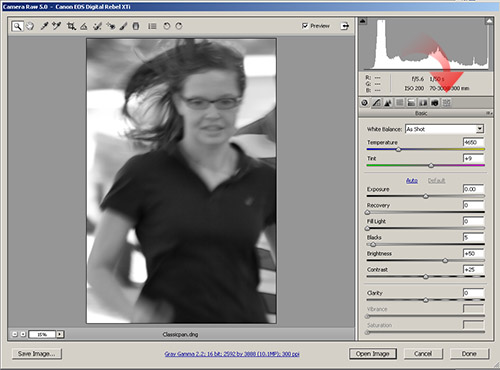Options are good, especially when said options are free.
Lightroom users have the option to use a multitude of presets to enhance their images – and most Lightroom users also have the option to use Photoshop and its native RAW processor, Adobe Camera Raw (ACR).
However, not many Lightroom users are aware that they can convert their favorite Lightroom presets over to ACR. Although at first this may seem to not be a big deal, it is an added option allowing you to endow Photoshop with one of the best features of Lightroom.
Presets for ACR are not new, however the free presets available for ACR are both less numerous and less diverse than those created for Lightroom. One way to leverage Lightroom presets in ACR is to copy every setting by hand over to ACR and save the preset, however this is extremely time consuming, and introduces more opportunity for human error.
The following is a procedure that streamlines the conversion process using the metadata power of Adobe’s DNG file format. Ok Ok Ok … this method could be done with sidecar files for native RAW formats, but it’s much much more work to write up and carry out. If you REALLY want to see this method sound off in the comments.
{note: remember, all tool, panel and module references are always in BOLD for easy reference as you map our workflow to Lightroom}
Ok, let’s get down to business …
Start the process in Lightroom. Choose a photograph to utilize for the conversion process. It doesn’t matter if the photo is a DNG or native RAW format, just make sure it is a RAW file. Apply the Lightroom preset you wish to convert.
Right-click {Control-click on Mac} on the ‘presetted’ image to bring up the contextual menu:
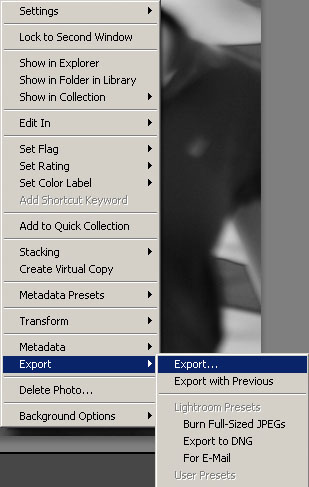
Select the Export sub-menu option, then select Export…
This will bring up the Export dialog window:
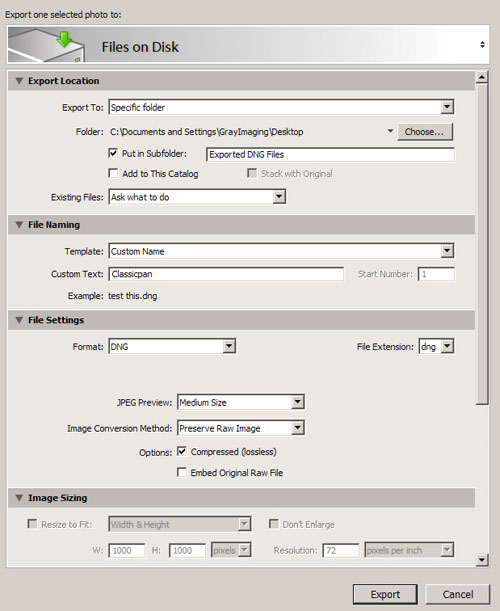
In the Export dialog, let’s make sure we have all our settings correct:
- export mode is set to Files on Disk.
- Export To: is set to Specific folder
- choose a location to save the Preset encoded DNG.
- in the File Naming section, set Template to Custom Name and set the Custom Text to the name of the preset that is being converted.
- in the File Settings section, set the format to DNG with either version of the extension.
- set the JPEG Preview to Medium Size
- Image Conversion Method to Preserve Raw Image
- check the Compressed (lossless) option and leave Embed Original Raw File unchecked.
With all these settings in place, click Export to create the output DNG file.
Now the fun part …
Fire up Photoshop and proceed to open the DNG that was exported from Lightroom. Once this file is opened, Adobe Camera Raw will automatically start.
Make sure that the preview image is identical to the exported image from Lightroom. If the image looks the same then the preset adjustments have been successfully imported.
Now, the adjustments have to be saved as a preset in ACR.
Under the ACR histogram, choose the button on the far right depicting three sliders:
… this will bring up the Presets tab:
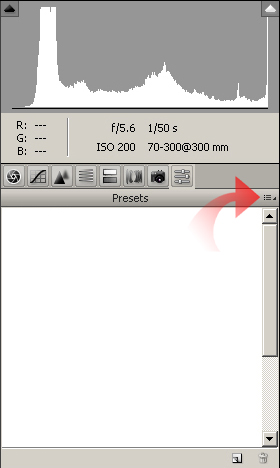
Now simply click on the menu icon in the upper right hand corner of the Preset window. This brings up the Develop Preset menu.
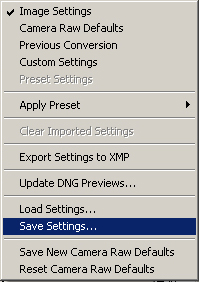
Select Save Settings… This will bring up the Save Setting dialog box, which appears to be much like Lightroom’s Save/Modify preset menu.
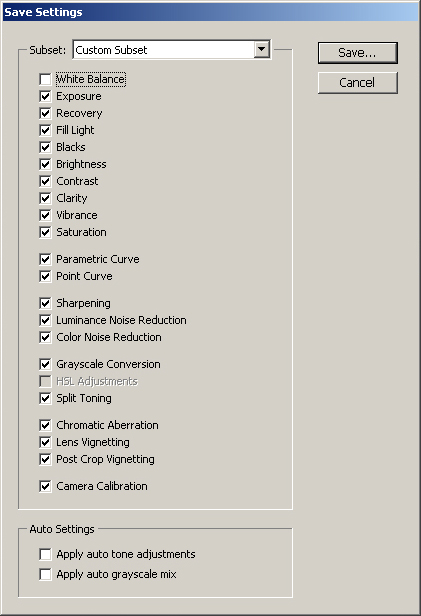
Now simply select all the settings that you wish this preset to affect. Make sure to select the same adjustments that the original Lightroom version uses, otherwise you will change the effect.
When properly configure click Save… Now the Save File dialog box is opened.
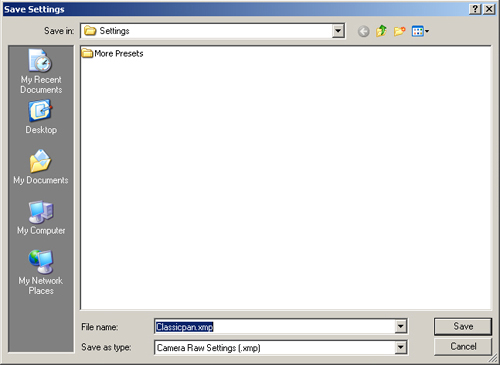
Since the DNG file was exported using the name of the preset, the preset’s proper name should be automatically populated as the filename of the ACR .xmp file. If not, change the name now, as it is the name displayed in ACR’s preset menu. Once done click Save.
The newly converted ACR preset should appear in the Presets menu in ACR. Open another Raw image with ACR after the conversion to be sure the preset operates as expected. The process is now complete.
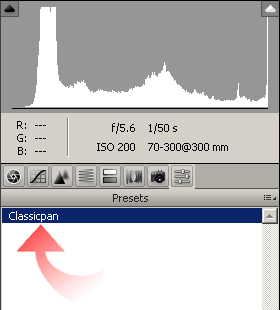
{note: Advanced Lightroom 2 presets, such as the +POLAROID 669 PRESET utilizing graduated filters, adjustment brushes, and the like will not carry over in this conversion per se. The exported DNG will carry those settings, and they will be available in ACR 5+ on opening, however will be lost when saving the preset. Presets involving localized adjustments are not well suited to this conversion process, however all normal adjustments will be retained.}
If you are working on just one image in Photoshop, this eliminates the need to open Lightroom to apply a preset. Portability is also another benefit, as you can apply ACR presets without installing them first. Simply copy the .xmp files from the ACR setting folder onto a USB keydrive.
Macintosh: /Users/UserName/Library/Application Support/Adobe/CameraRawFolder/Settings
Windows: C:Documents and SettingsUserNameApplication DataAdobeCameraRawSettings
You can then apply the presets by choosing Load Settings… from the ACR develop menu and point the file browser to the USB keydrive to load the preset’s .XMP file. This allows you to use presets from your Photoshop ACR on your work machine or friend’s computer.
Now Adobe Camera Raw has been imbued with the power and accessibility of Lightroom presets. This is not a procedure that should be carried out for every Lightroom preset you would have installed, but for those presets you truly rely on. If you are going to process just an image or two, and you know that Photoshop will be the final stop, you can bypass Lightroom altogether and still have your favorite presets at your disposal.
